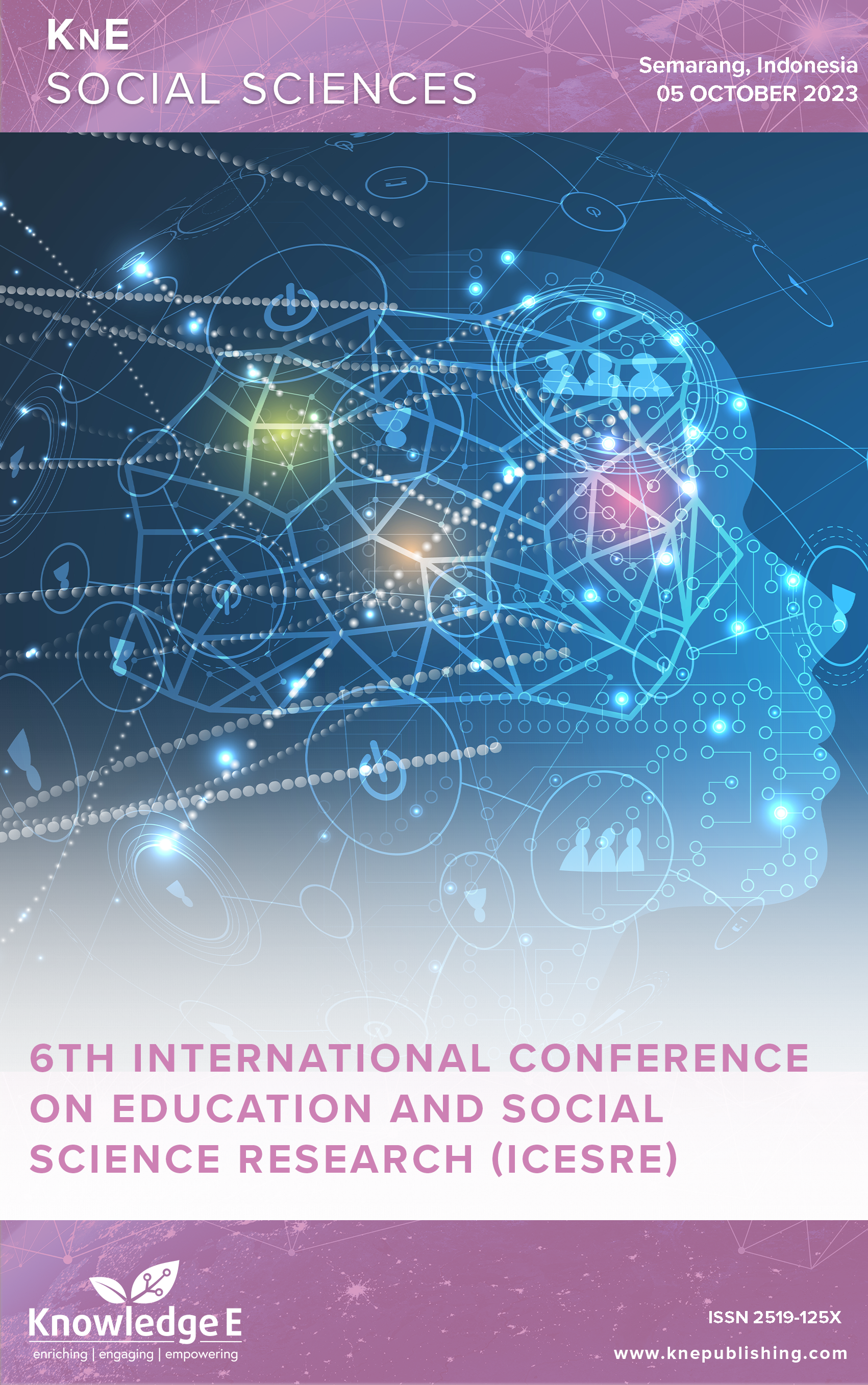Designing a Hybrid E-Dian Application to Increase the Effectiveness of IPAS Learning in Elementary Schools: Web and Android-based System Design Approach
DOI:
https://doi.org/10.18502/kss.v9i6.15326Abstract
At the elementary level, especially in elementary schools, a strong understanding of the learning material being taught is very important for students’ academic and cognitive development. One of the main subjects in the elementary school curriculum is Natural and Social Sciences (in Indonesia it is called IPAS). To design more effective science learning experiences, sophisticated and user-friendly assessment tools are necessary. In the digital era, technology-based applications can be an efficient and effective solution. Therefore, this research designed an innovative project entitled designing a hybrid E-Dian application to increase the effectiveness of IPAS learning in elementary schools. The E-Dian hybrid application was designed and developed using the prototyping method as a design approach. The prototyping method is an approach to product or system development that involves creating an initial model or prototype that can be used to test and illustrate the desired idea, function, or design before creating the final product. This research aims to design a hybrid E-Dian application using the prototyping method. The development process involves designing a system based on user needs, which is then tested according to the system design. The test results show that the E-dian application system design has been proven to be good and in accordance with the specified needs.
Keywords: design, prototyping method, Hybrid, E-dian, IPAS
References
Karagöz E, Oral l, Özge, Han Kaya O, Tecim V. Lms Selection Process For Effective Distance Education System In Organizations. KnE Social Sciences, 1(2), 343-356.2017. https://doi.org/10.18502/kss.v1i2.668 DOI: https://doi.org/10.18502/kss.v1i2.668
Snow CE, Dibner KA (2016). Science literacy. In C. E. Snow K. A. Dibner (Eds.),
Science Literacy: Concepts, Contexts, and Consequences. National Academies Press.
https://doi.org/10.17226/23595 DOI: https://doi.org/10.17226/23595
Widjaja G, Aslan A Blended Learning Method in The View of Learning and Teaching Strategy in Geography Study Programs in Higher Education. Nazhruna: Jurnal Pendidikan Islam, 5(1), 22-36. 2020. https://doi.org/10.31538/nzh.v5i1.1852 DOI: https://doi.org/10.31538/nzh.v5i1.1852
Susanto, Azhar Meiryani. System Development Method with The Prototype Method. International Journal of Scientific Technology Research.8(7), 141-144. 2019.
Gamao AO, Rebortera MA Issues and Concerns in the Implementation of the Students’ Information System. KnE Social Sciences, 3(6), 125–148. 2018. https://doi.org/10.18502/kss.v3i6.2378 DOI: https://doi.org/10.18502/kss.v3i6.2378
Setiawan, Ari, Djemari Mardapi, Supriyoko, Dedek Andrian. The Development of Instrument for Assessing Students’ Affective Domain Using Self- and Peer- Assessment Models. International Journal of Instruction, v. 13, n. 3, p. 425-438. 2019. DOI: https://doi.org/10.29333/iji.2019.12326a
Ahmad T, Iqbal J, Ashraf A, Truscan D, Porres I. Model-based testing using UML activity diagrams: A systematic mapping study. Comput. Sci. Rev. 2019, 33, 98–112. DOI: https://doi.org/10.1016/j.cosrev.2019.07.001
Ko Y-C, Lo C-H, Chen C-C. A Study of the Application of Design By Metaphors to the User Interface of Smartphones. KnE Social Sciences, 3(10).2018. https://doi.org/10.18502/kss.v3i10.3503 DOI: https://doi.org/10.18502/kss.v3i10.3503
Çilgin C, Tecim V Designing Online Collaboration Tool for Managing Postgraduate Education with New Web Technologies. KnE Social Sciences, 3(10), 280–293. 2018. https://doi.org/10.18502/kss.v3i10.3544 DOI: https://doi.org/10.18502/kss.v3i10.3544
Toker D, Conati C, Carenini G, Haraty M Towards Adaptive Information Visualization: On the Influence of User Characteristics. In: Masthoff J, Mobasher B, Desmarais MC, Nkambou R (eds) User Modeling, Adaptation, and Personalization. UMAP 2012. Lecture Notes in Computer Science, vol 7379. Springer, Berlin, Heidelberg. 2018. https://doi.org/10.1007/978-3-642-31454-4_23 DOI: https://doi.org/10.1007/978-3-642-31454-4_23
Aulia Aziiza A, Nur Fadhilah A Analisis Metode Identifikasi dan Verifikasi Kebutuhan Non Fungsional. Applied Technology and Computing Science Journal, 3(1), 13– 21.2020. https://doi.org/10.33086/atcsj.v3i1.1623 DOI: https://doi.org/10.33086/atcsj.v3i1.1623
Setiawan, Ari; Fajaruddin, Syarief; Andini, Dinar Westri. Development an honesty and discipline assessment instrument in the integrated thematic learning at elementary school. Jurnal Prima Edukasia, [S.l.], v. 7, n. 1, p. 9-19. 2019. https://doi.org/10.21831/jpe.v7i1.23117 DOI: https://doi.org/10.21831/jpe.v7i1.23117

